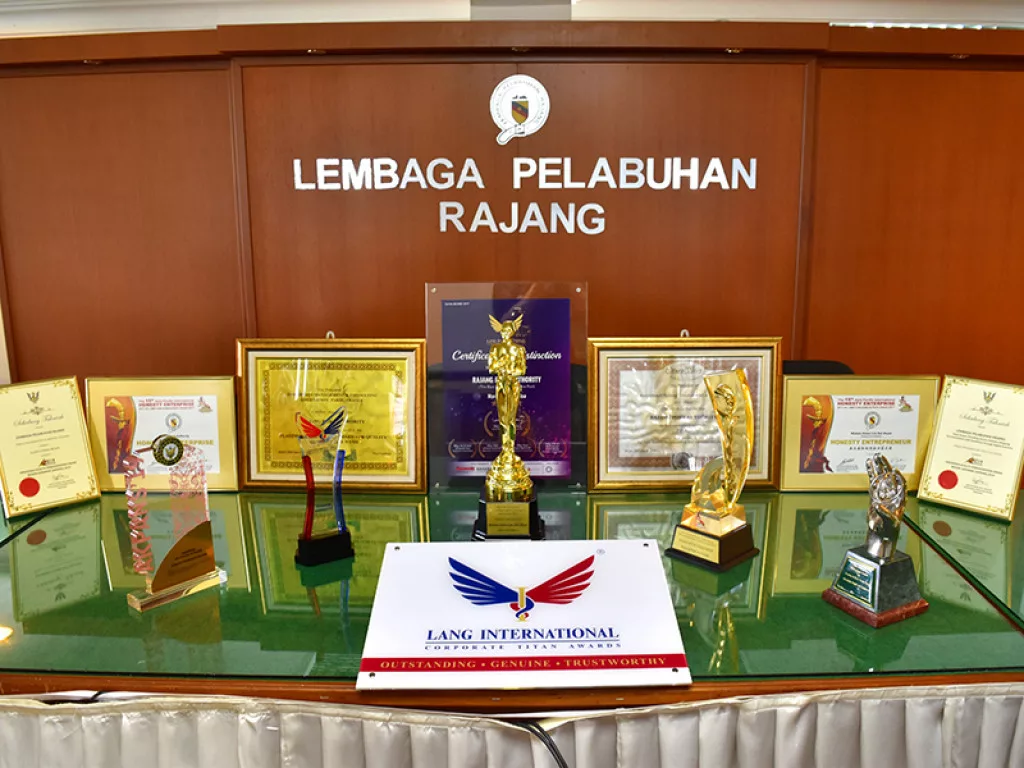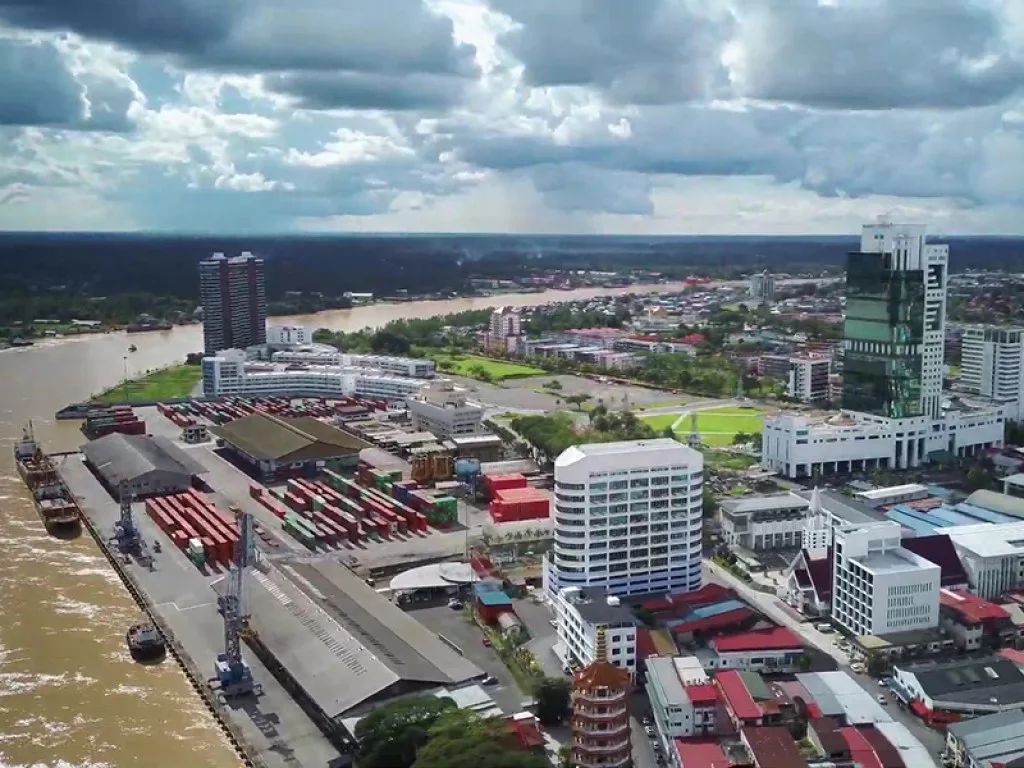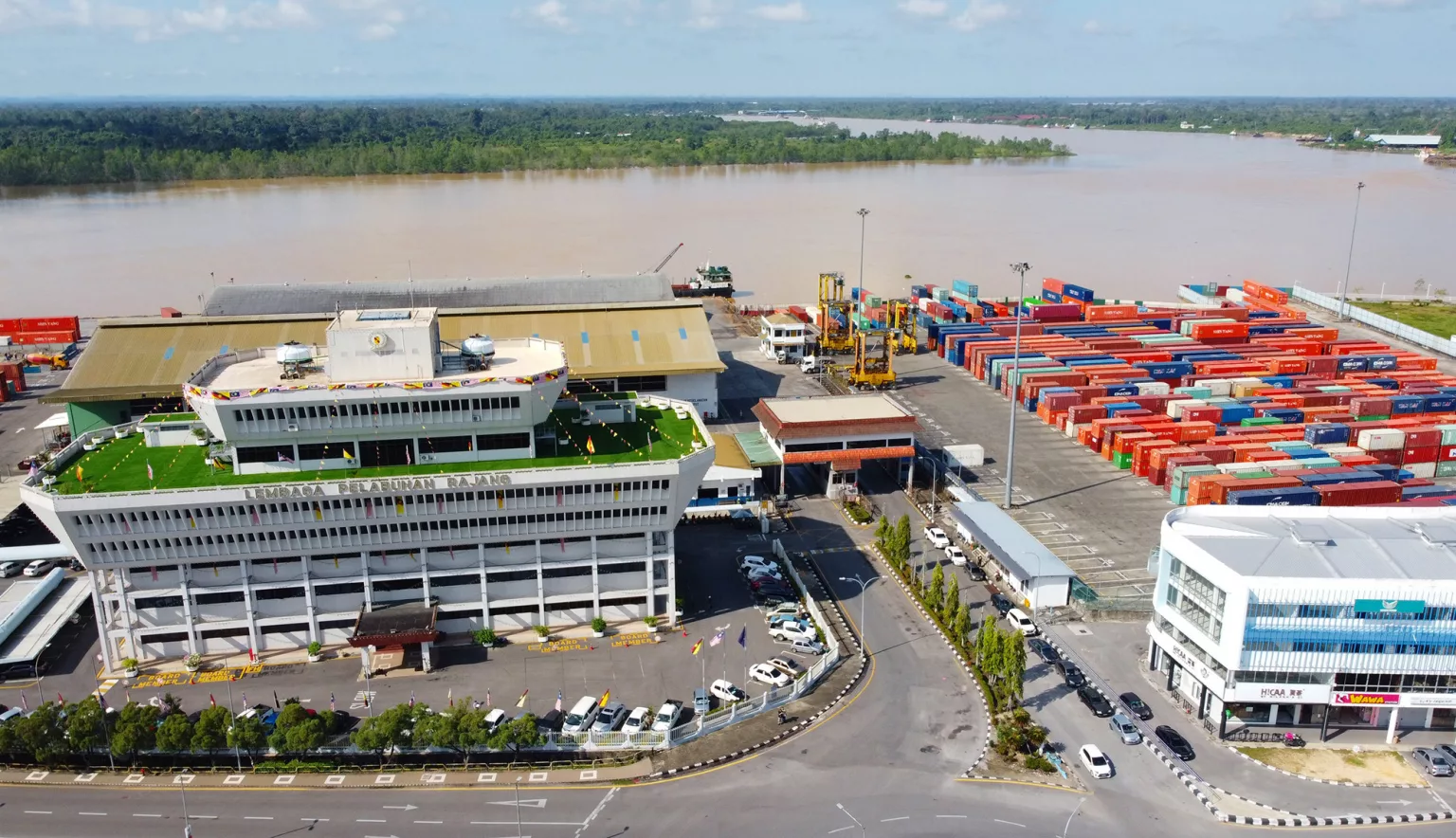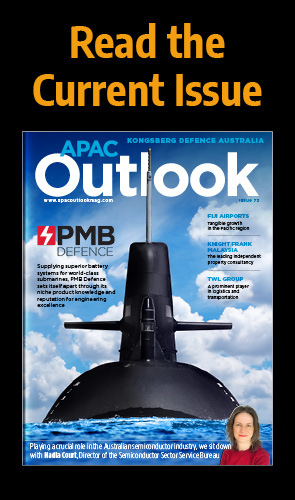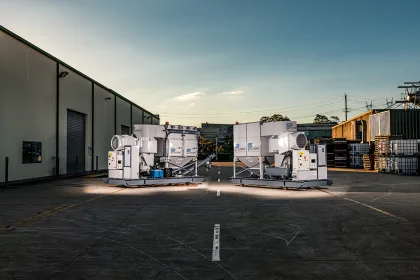As Rajang Port Authority celebrates its 50th anniversary, General Manager Datin Helen Lim Hui Shyan unpacks her vision of an industry-leading port centred on integration and collaboration.
EAST MALAYSIA’S FIRST PORT OF CALL
A long the breadths of the mighty Rajang, snaking its course through Malaysia as the country’s longest river, you will find the principal port of the region, strategically positioned as the distribution centre to the vast hinterlands of Sarawak.
As the crucial nexus to provide vital links to major national and regional ports, Rajang Port Authority (RPA) has just celebrated 50 years of operation.
RPA is a feeder port situated in the central region of Sarawak, Malaysia’s largest state, located on the northwest coast of Borneo. The port is based within the major administrative district of Sibu, an inland city located 60 kilometres from the South China Sea.
RPA operates as a statutory body of the state of Sarawak, under the purview of the Ministry of Infrastructure and Port Development. It consists of its own Board of Directors comprising appointees from the politics, businesses and the state government.
The port’s major exports include sawn timber and timber products, while its primary trading partners include the ports of the Malaysian Peninsula, and regional ports in Vietnam, Thailand, Singapore and Taiwan.
“We also feed for eventual calls from and to the world like Europe, China, Japan and Hong Kong.
“We serve a clientele made up of the shipping industry, a dozen of their agents, 70 forwarding agents for the business community in this region and the other players in this total logistics chain like the transportation associations, the unions and their 30 member companies.”
For RPA’s General Manager, Datin Helen Lim Hui Shyan (Helen Lim), the reliability that can be attested to this longevity in the logistics sector, is truly a competitive advantage.
“Being one of the players in this holistic logistics chain, the port has earned the trust of the other players in fulfilling our role to catalyse trade and commerce, spur economic activities, enable growth of industries and to contribute toward nation building,” Lim comments.
Taking the helm of RPA’s operations as General Manger, Lim has an intimate understanding of the company, having worked her way up after entering the business as an accountant before moving on to Department Head of Finance.
“I had begun to be assimilated into the various processes of the port as being in finance and dealing with money matters, I would be involved one way or another with all the other departments in the organisation,” she recalls.
With this foundational experience spanning all divisions of the port, complimented by a master’s in Business Administration, Lim continued her path to the upper echelons of company management.
“I had decided to add value to what I could do and to be better equipped with the necessary advancement.”
“One of our strongest human resource philosophies is the ‘ownership of processes’, which automatically instils in each employee of Rajang Port Authority a sense of belonging and a natural sense to do more with less”
Datin Helen Lim Hui Shyan, General Manager
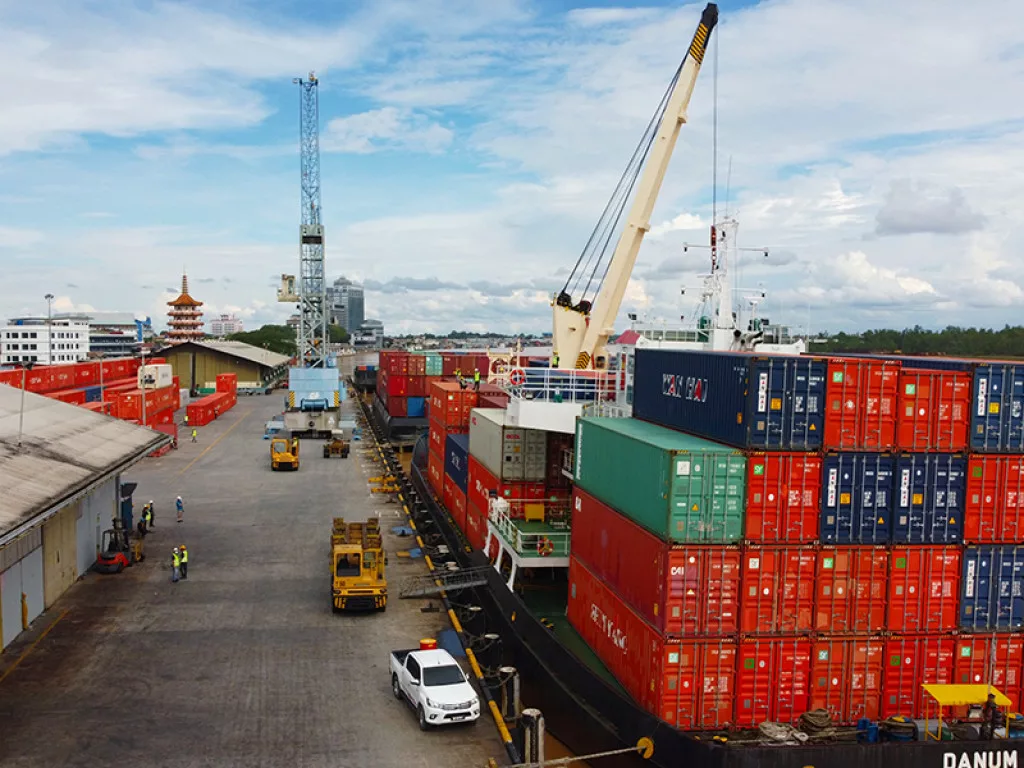
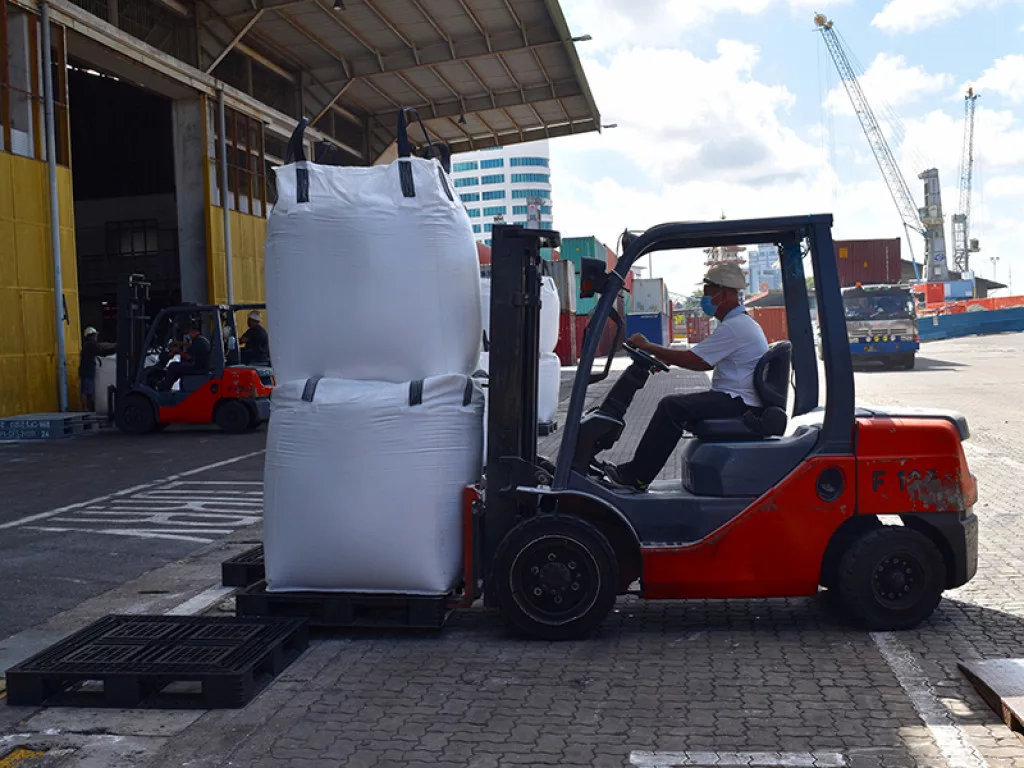
INVESTING IN INNOVATION
Fondly referred to by her moniker of “the Iron Lady”, and “the turnaround lady of Sarawak”, Lim has taken huge strides in RPA’s transformation.
As the port has transitioned from the early 1970s, undergoing significant changes through the age of containerisation, RPA’s transparency and open way of working has remained a constant. For Lim, this sense of inspiring trust is paramount.
“As custodians of the property of others in the movement and handling of property or cargo, it is imperative to be honest and to be trustworthy.” she tells us.
“I am especially proud that Rajang Port Authority has done exactly that as testified by being awarded the Asia Pacific International Keris Award of ‘Honesty Enterprise’.”
RPA has witnessed significant periods of change guided by aggressive stages of investment, such as between 1974 and 2014, when the total cost of development amounted to RM250 million, involving port expansion, building and upgrading wharfs, and the construction of the corporate building alongside other ancillary facilities.
“In keeping pace with the requirement of the day, the port had also invested in the purchase of the most technologically advanced fleet of machinery and port equipment. Between 1991 and 2015, this investment amounted to RM81 million,” Lim adds.
“The investment in infrastructure, facilities, machinery and equipment has now put in place a modern port of 13.5 hectares or 33 acres with an internationally accredited infrastructure, wharf integrity, yards, transit sheds, storage, reefer points for refrigerated containers and the most technologically advanced fleet of machinery and port equipment.” RPA has also long established a sound and modern Information Technology platform with its customised Integrated Port Management System providing a one push button linkage to the world.
This long-running history keeping pace with industry evolution has allowed RPA to establish a robust network in which to thrive as an integral component of the holistic supply chain, covering maritime transport, port handling and hinterland transport.
“The key to success rests on the integration and complimenting and supporting roles played by all components in the supply chain.
“Our strategic alliance and partners and suppliers provide the backbone of adequate supply to meet the demands of users, directly and indirectly,” Lim states.
Indeed, the company’s strengths in this area have been officially recognised, as in 2019 RPA was awarded the Lang International Corporate Titan Award of ‘The Best Managed Riverine Port’.
“In providing the vital link between the suppliers and their customers, between the global supply chain and the local and regional trade and consumption, the ultimate end users of goods and services, it is crucial for the port to maintain our own sound and solid system, structure and processes internally to carry out what a port should in the holistic logistics chain,” Lim comments.
Fulfilling a crucial role in the state of Sarawak’s infrastructural development, RPA’s operations compliment nationwide projects such as the Pan Borneo Highway which is set to provide a vital link between the hinterland and the state’s inner core.
“The symbiosis between the port and our strategic alliance and partners and suppliers are not only important but critical toward the success of our business”
Datin Helen Lim Hui Shyan, General Manager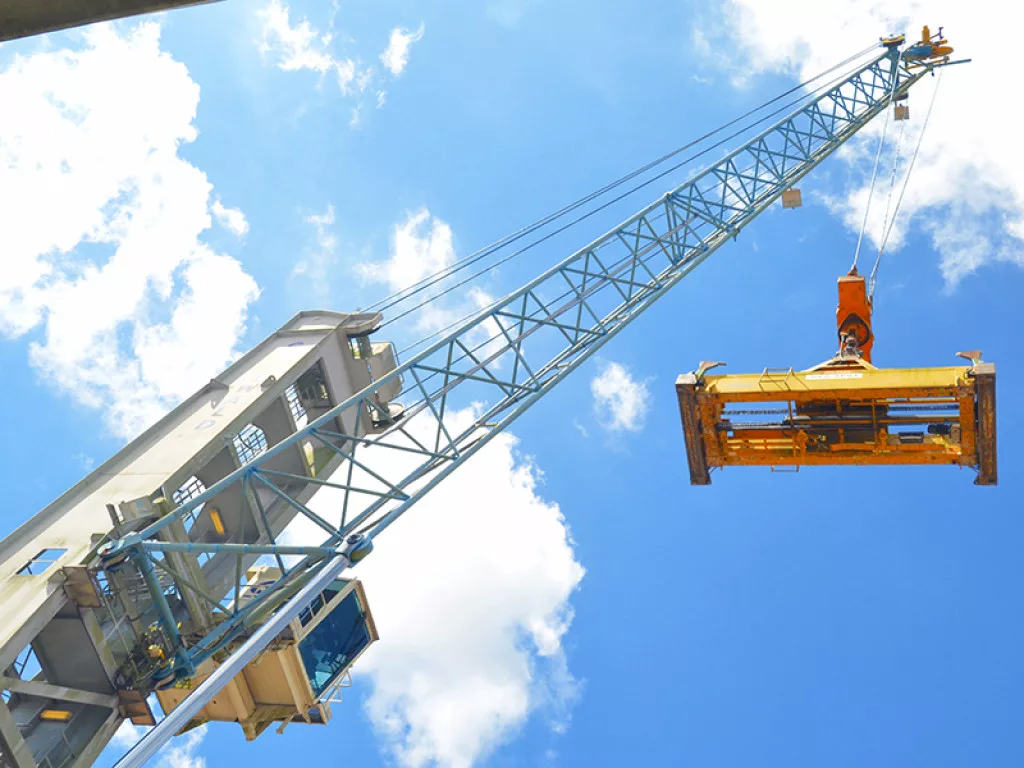
EMPOWERING EMPLOYEES
The true links in the chain are the human components behind the company; employees are the backbone of trade as the Rajang Port Authority representatives to physically handle and manage port operations.
For Lim, employee management and retention has occupied a great deal of her focus since assuming the role of General Manager. Indeed, one of the first actions that Lim took was to instil a sense of value and pride amongst RPA employees by implementing a Human Resources department
“The first endeavour was the formulation of corporate values and human resource philosophies and principles.
“Like any other resource, the management and development of our human resource has been based on the philosophy of ‘requirement and optimalisation’ with the associated principle of ‘the right person for the right job’,” Lim tells us.
With the human resources philosophies developed in alignment with the corporate principles, RPA successfully establishes the building blocks for a successful, and resilient system.
FUTURE HORIZONS
Looking to the years ahead, RPA’s immediate concern will be recovering from what Lim refers to as, “the brutality of the pandemic.”
In spite of the COVID-19 pandemic’s unprecedented impact on logistical disruption, the port has navigated this turbulent time relatively well.
“The port has in fact recorded an even better performance in our operation in 2020 than the year before and has continued to improve in 2021.
“Our profitability has been remarkable to register a 200 percent increase in 2020 and as of the end of August 2021, the profitability has achieved a further 20 percent increase,” Lim comments proudly.
Aside from this, Lim remains dedicated to persevering with the port’s resiliency and bolstering operations by continuing to integrate and engage in operations with other major logistics players in the holistic supply chain.
“My key priorities are to ensure that we continue to be resilient and to sustain in our operation and business and to exceed our present performance, to not be complacent on the aspect of safety and health for all whom we deal with and that of our corporate citizens,” Lim concludes.
“We especially hope to engage with those who might have been adversely affected by the pandemic to build toward a stable economic recovery.”
